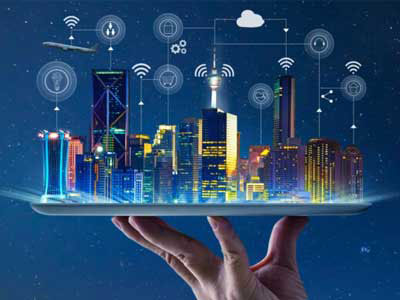Key Takeaway
Industrial IoT (IIoT) is a subset of the Internet of Things (IoT). IIoT focuses on industrial applications, like manufacturing facilities and production lines. It’s a key technology in Industry 4.0, the next industrial revolution phase.
IoT, on the other hand, is a broader concept. It includes connecting everyday devices, like smart home gadgets and wearable tech, to the internet. While IoT aims to make daily life easier, IIoT aims to improve efficiency, safety, and productivity in industrial environments.
Key Differences in Definitions
Industrial Internet of Things (IIoT) and Internet of Things (IoT) may seem interchangeable, but they cater to different needs. IIoT focuses on enhancing manufacturing and industrial processes through connected devices and smart automation, emphasizing reliability and precision. In contrast, IoT spans a broader range, including consumer devices like smart home appliances and wearables, prioritizing user convenience and integration. Understanding this distinction helps in grasping how these technologies impact our daily lives and industrial efficiency.

Use Cases in Different Sectors
In the dynamic world of industrial automation, the Industrial Internet of Things (IIoT) plays a pivotal role in transforming operations across sectors like manufacturing, logistics, and agriculture. By embedding sensors and intelligent devices on factory floors, IIoT technologies preemptively alert engineers to potential equipment malfunctions. This foresight drastically minimizes downtime and cuts maintenance costs, ensuring a seamless production process.
Consider a logistics company leveraging IIoT to optimize route planning and freight monitoring. Here, real-time data analytics enhance delivery efficiency and reduce operational delays. Similarly, in agriculture, sensors can monitor soil moisture and crop health, enabling precise irrigation—this not only conserves water but also boosts yield.
As a newly joined engineer, understanding these practical applications of IIoT will be crucial. Each sector reaps unique benefits from these technologies, showcasing their versatility and capacity to tailor solutions to specific needs. Keep in mind, the core of IIoT’s strength lies in its ability to make complex systems more responsive and predictive, making industrial environments safer and more productive. As you embark on this journey, remember that the essence of technology is to simplify tasks and enhance operational efficiency—fundamentals that drive industrial innovation forward.
Technology and Infrastructure Variations
The backbone of the Industrial Internet of Things (IIoT) is its robust technology infrastructure, specifically tailored to withstand the challenging environments of heavy industry. Unlike typical IoT systems, which prioritize cost-effectiveness and user-friendliness for everyday applications, IIoT platforms are built on a foundation of resilience and high performance. For instance, they integrate advanced cybersecurity measures to safeguard against potential industrial espionage or cyber-attacks.
Connectivity in IIoT is another critical area—employing reliable channels like 5G or fiber optics ensures that the massive amounts of data generated are transmitted quickly and efficiently. This is vital for real-time analytics, which helps in making swift, informed decisions. Moreover, these analytics platforms are designed to process and analyze data at a scale and speed that ordinary IoT platforms might not support.
For a newly joined engineer, understanding these distinctions can greatly impact how you approach problems and develop solutions in an industrial setting. Remember, the scale and precision at which IIoT operates not only demand robust technology but also a sharp focus on maintaining uninterrupted service and security. As you grow into your role, keeping these principles in mind will guide your contributions towards enhancing industrial systems and processes.
Benefits and Challenges in Each Domain
Industrial Internet of Things (IIoT) systems offer transformative benefits, significantly enhancing operational efficiency and improving worker safety across various industries. However, integrating these advanced technologies with existing legacy systems presents a major hurdle. This challenge involves retrofitting old machinery with modern sensors and ensuring seamless communication between disparate systems, which can be both costly and complex.
Another critical issue facing IIoT is the secure management of the enormous data volumes these devices generate. Ensuring data integrity and security is paramount, as any breach can lead to severe implications, disrupting operations and compromising sensitive information.
Despite these challenges, the potential of IIoT to revolutionize industrial operations is undeniable. Addressing these obstacles with innovative solutions and robust security measures is essential for leveraging the full benefits of IIoT technologies. By overcoming these issues, industries can achieve greater productivity, enhanced safety, and reduced operational costs, marking a significant step forward in the digital transformation journey.
Future Prospects and Developments
The future of the Industrial Internet of Things (IIoT) and Internet of Things (IoT) holds transformative potential, shaping how industries and daily life intersect with technology. IIoT is set to further integrate artificial intelligence, streamlining complex industrial operations and enhancing efficiency. This evolution means that machines will not only communicate better but also make intelligent decisions independently, minimizing human error and increasing productivity.
On the other hand, IoT is expanding into personal devices, making smart technology an integral part of our homes and personal lives. Imagine your refrigerator, knowing you’re almost out of milk, placing an order directly with your preferred grocery store. This level of automation and connectivity aims to simplify mundane tasks, freeing up time for personal pursuits.
For you, as a newly joined engineer, understanding these developments is crucial. Your role may involve deploying these technologies to create solutions that are not only innovative but also user-friendly and efficient. Remember, the essence of IIoT and IoT is not just about connectivity but creating systems that make everyday tasks smoother and industries more robust. As you step into this evolving field, keep learning and adapting to leverage these technologies effectively, ensuring they contribute positively to both economic and social spheres.
Conclusion
In conclusion, while IIoT and IoT share foundational technologies, their applications, challenges, and impacts vary greatly. IIoT’s focus on industrial enhancement makes it a cornerstone of modern manufacturing and production landscapes, whereas IoT’s influence on everyday life continues to grow, making our personal environments smarter and more connected. Understanding these differences not only helps in choosing the right technology solutions but also in appreciating how these innovations shape our world.
